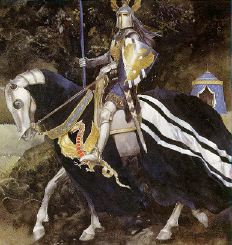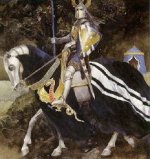If people find answers (understand them through their own words(mind), then I find it enough "deductive", yes. And there is no individual book to check all the information i gave above... It comes from the observation and from reading of different books; one of them is the Bible (yes, I am seeking many information there, to "unlock" the hidden (inverted, stolen...) 'mysteries' from the past; one of them is the fact that old Slavs called "kings" as Volhvs (Mages; "great ones"). In matter of fact, one of Karantanian princes was called "Valuk"
http://en.wikipedia.org/wiki/Valuk_(duke) (modern interpretation of latin transmutation, transliteration of "Wallucus dux". His real name was Volkh or Volhv, which means "Druid" (Mage) and a "king"... Every king has 'saw and could predict the future, danger, describe the enemy from the distance (even if he did not see him directly with his physical eyes)... That's how the real King became to be the leader of a nation. That's why was Christianity so distant and foreign among these people. In fact was Christianity more deadly than any Gengis Khan (Kniaz) who came to save Russians (for example) from this new deadly cult which was arriving from Byzantium and Rome (that's why were also 'mongols' (the real name was Moguls (which means 'great ones' in old Greek - the word itself has no meaning in Chinese (current Mongol) languages) well accepted among Russian aristocracy...
a little thought about the 'mythology'...
One of many Slavic surnames was also famous "Vuk" or Volk or "wolf". It was a patrimonial name of every Volhv who achieved the status as a "protector of a village"; a Werewolf. To become a Werewolf was required a special, sacred ritual, which has roots in Shamanism...
(perhaps you've heard or read about the story when the Witch(Viech; Vešča; Volhva, Veda Vedun; "the one who knows(sees things as a Moth (also check the Lord of the Rings story about Gandalf's transformation into a Moth (Vešča; "witch; Witcher)" or a thing called "Mothman" (Vešč; (dark) Witcher (moth - Seer)
http://files.abovetopsecret.com/files/img/bd51283fa0.jpg ) as are stories which are still part of modern western World... ) turned the prince into a frog? Actually was the story written by Grimm brothers when they were collecting tales with their trip through ex Karantanian (then already Austrian) territories... The ability of these Mages (and knights) was a special state of mind, where their body called Nav left their material body in Jav... This process can be also described as several "Astral" projections... But there were differences between them (the best description about this process is described in the Tibetan Book of the dead; as part of ancient Vedic (Shamanic) - Asian teachings...which were carried into the Egyptian "Book of the Dead" of Osiris (=Vedic Asura)...
Current Chinese "secret service", as well as several CIA members are (still) extremelly interested into this subject... part of this teaching is also called "Remote viewing", which was generally established by Ingo Swann...
Back to the "werewolves". So, every Volhv have had an ability to "join" (merge) his Information ("body") or Mind (Um) with the body of an animal... generally to become part of the "wolves". When he returned back he carried part of this animal "information" in a spiritual way... That's why were his Volkv descendants also called Volk or Vuk.
(if the priest joined, combined his soul with a dying or a person who was in status of "passing away" (instead he was already physically dead, 3 - 40 days...) he become known as a "Vampir"...He came from the realm of Navi (also the name of a cemetery, the place of the souls which are still "waiting" (or do not want to re-incarnate)...
This is also the way how I "see" the history(time), not only through written (official) messages in Books, but to observe them between the lines...



